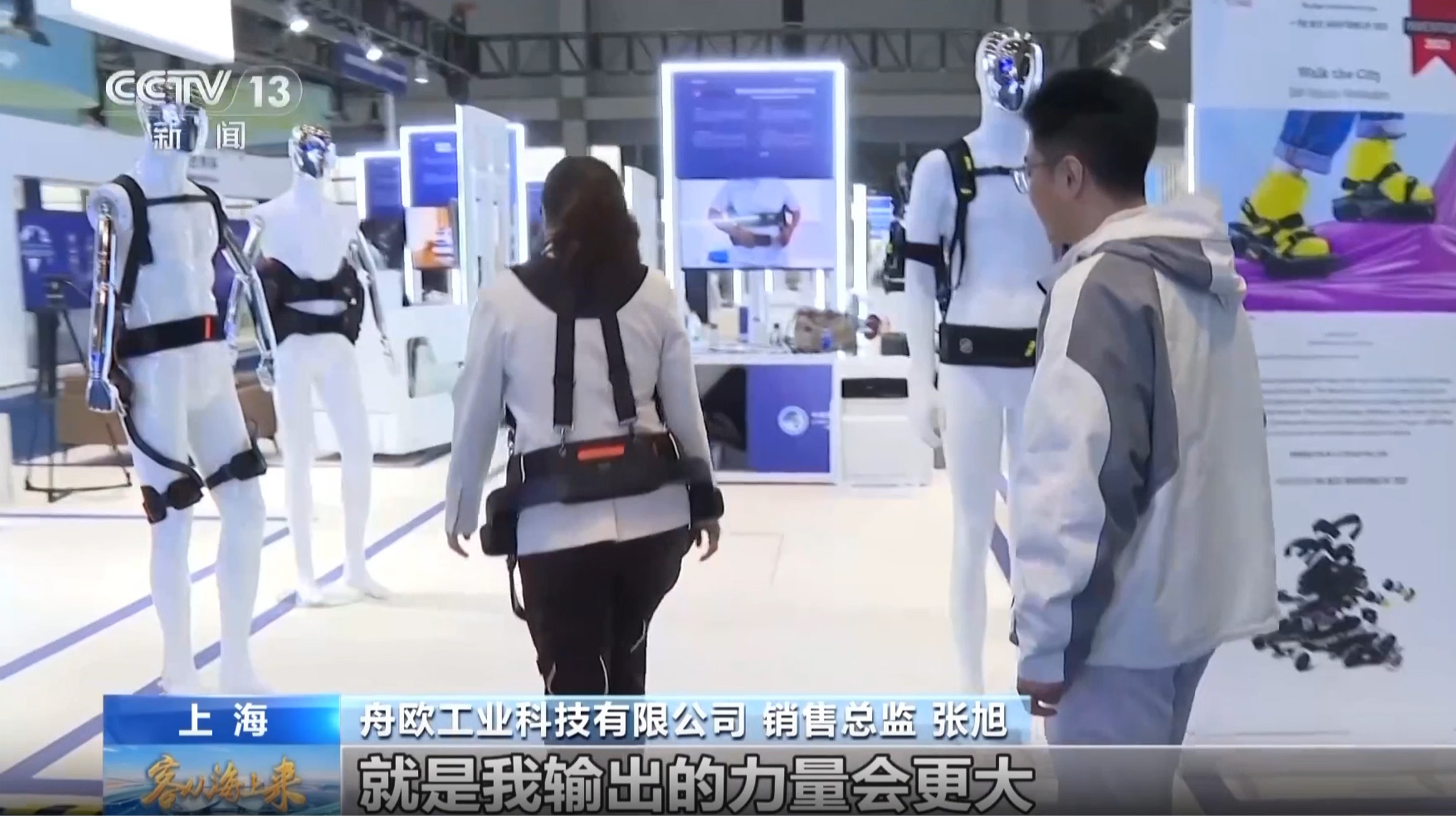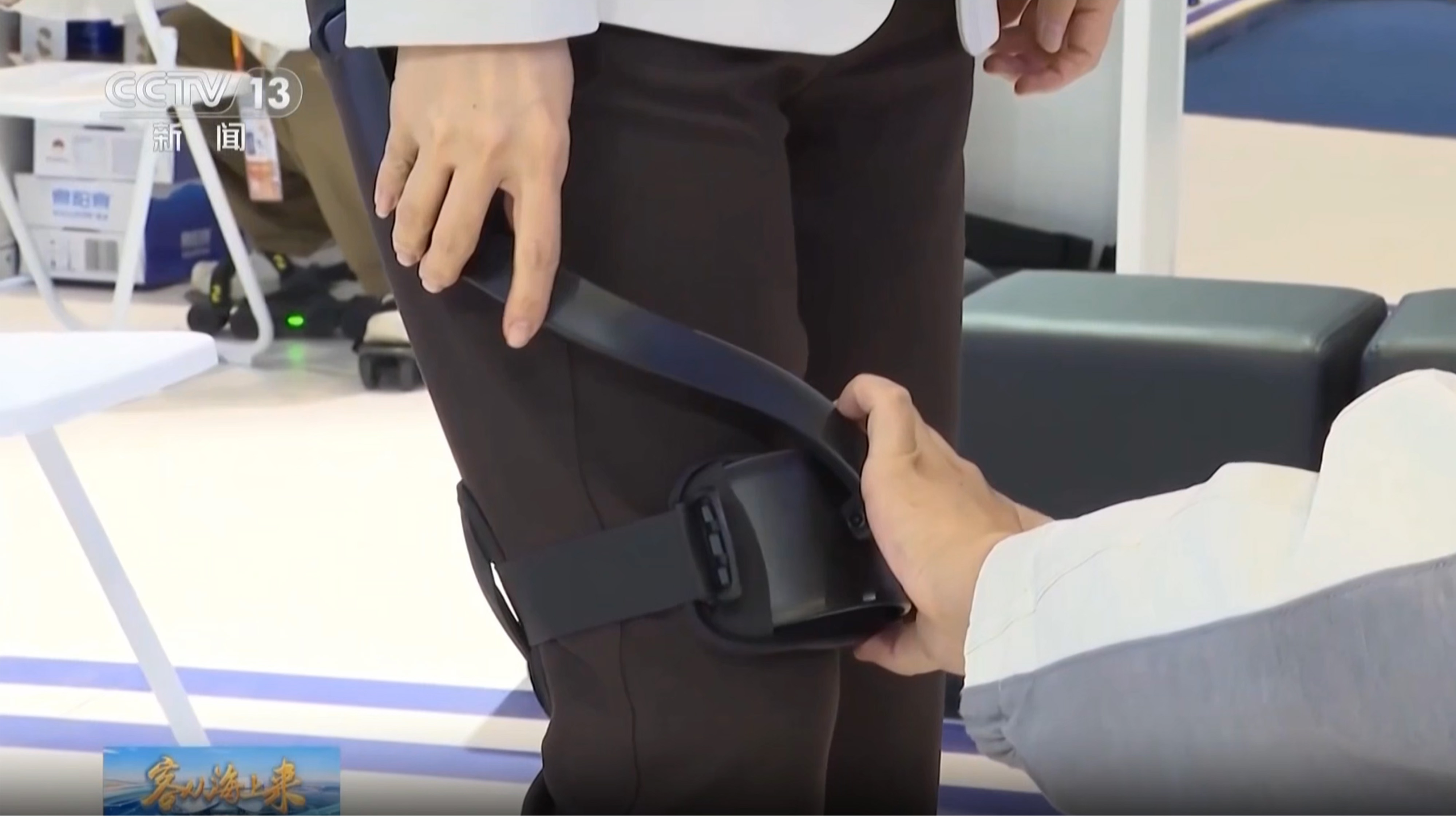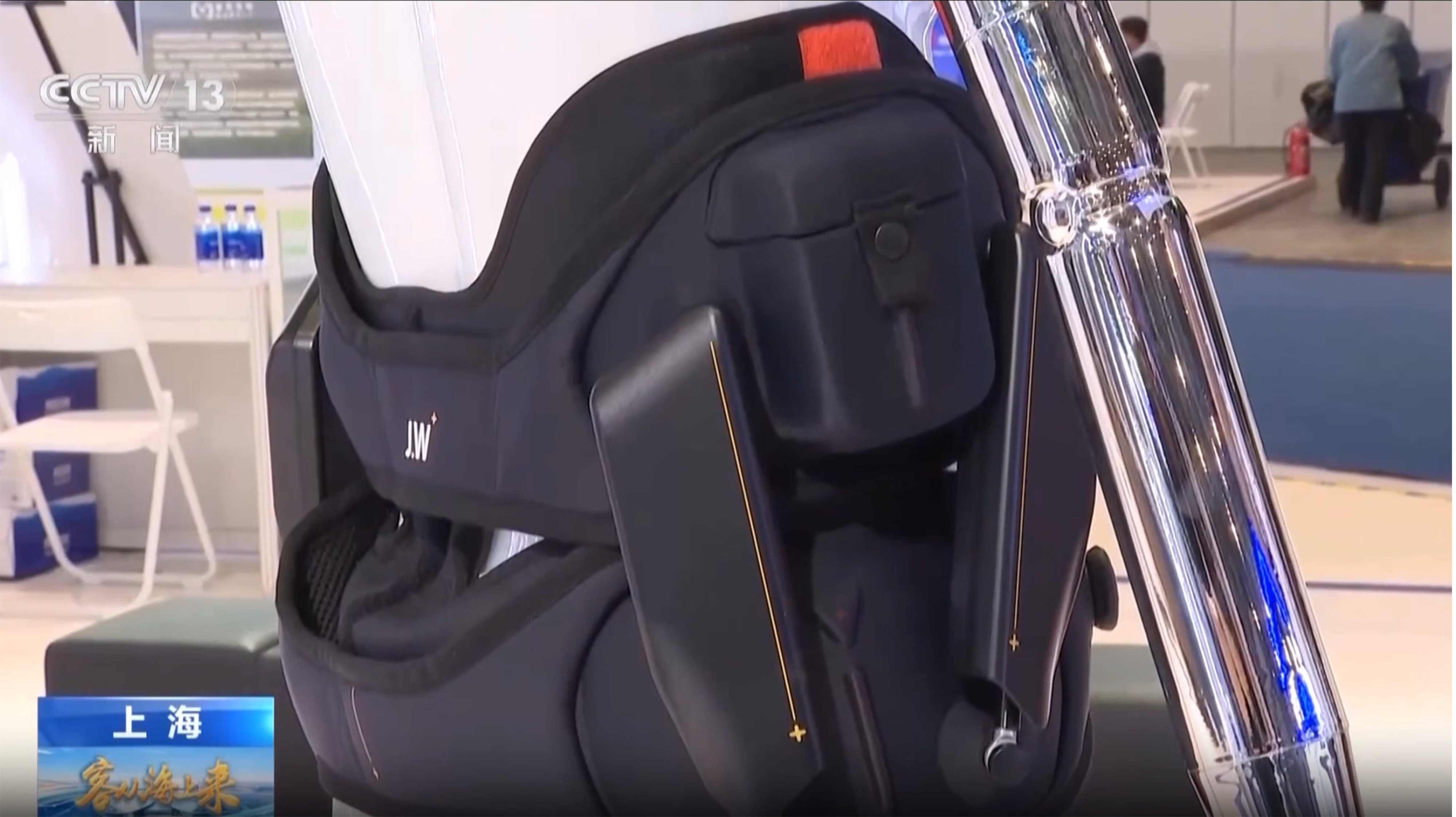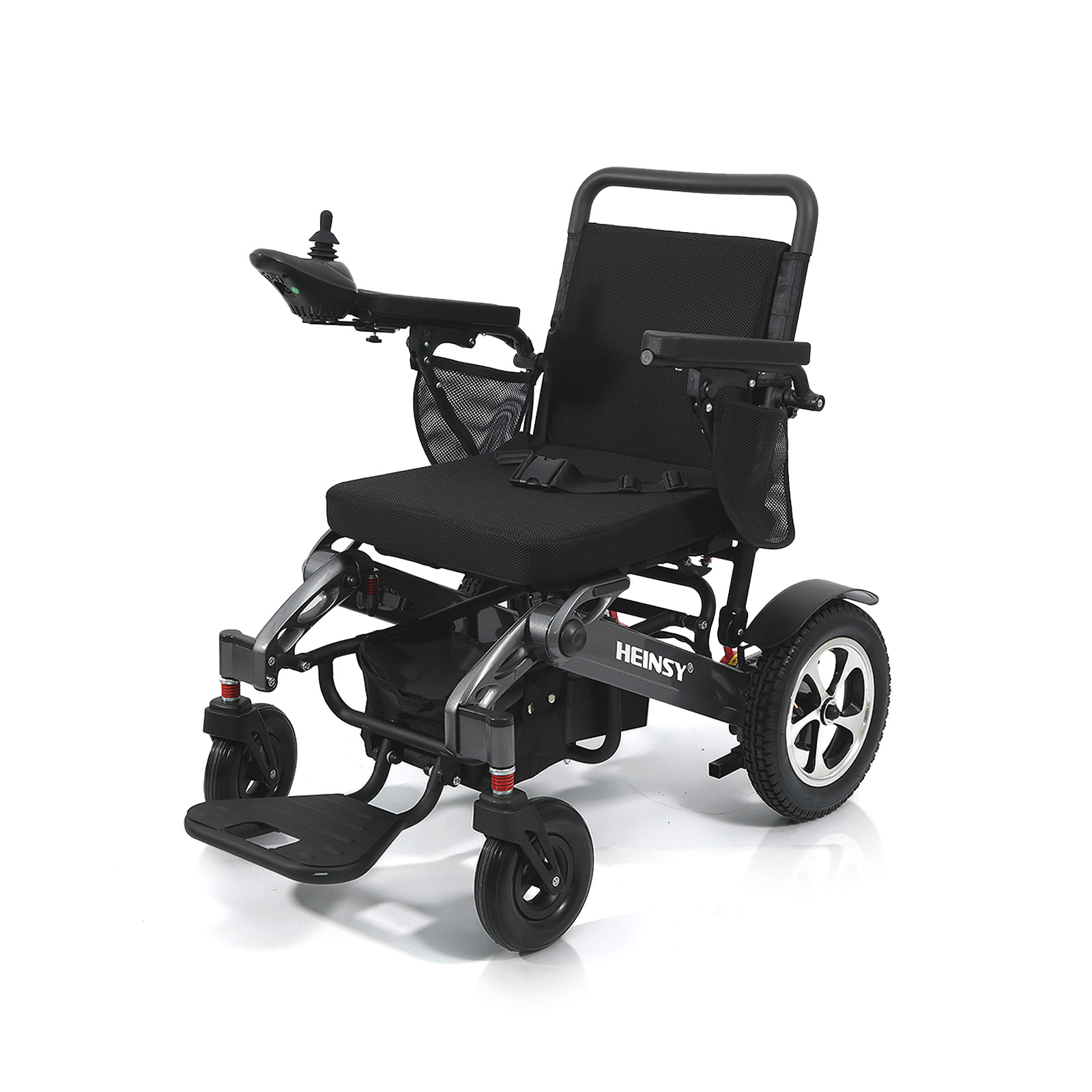1. Introduction In modern society, with the increasing trend of population aging and the accelerating pace of life, the importance of means of transpo...
READ MOREWe provide quality products and services to customers from all over the world.
“1+1>2”! Electric Wheelchair and Exoskeleton Coordination at CIIE Enables Seniors to Move Independently
On November 6, the 8th China International Import Expo (CIIE) officially opened. At the exhibition, the appearance of an exoskeleton robot not only attracted attendees’ attention but also formed a “golden partnership” with the displayed electric wheelchair, providing a multi-scenario mobility solution for people with limited leg mobility and making independent movement easier and more convenient.




Zhang Xu, Sales Director of Zhouou Industrial Technology Co., Ltd., introduced to CCTV reporters at the exhibition: “The assistive exoskeleton can be used by seniors for climbing mountains, going upstairs, and even some rehabilitation training.” This exoskeleton robot, as a wearable mechanical device, works in coordination with human joints through sensors, accurately capturing the user’s leg movement intentions and automatically providing assistance while walking, fundamentally enhancing the user’s mobility. In the exhibition experience area, Zhang Xu helped a reporter put on the exoskeleton robot in just one minute. When the reporter stood up and took steps, the device responded immediately, providing support in sync with leg movements. “It feels like my legs are being pushed forward,” the reporter said. Zhang Xu replied, “Yes, it makes it very easy, especially for the knees.”

The electric wheelchair, working seamlessly with the exoskeleton robot, also demonstrates strong adaptability to different scenarios. In narrow indoor spaces or flat outdoor surfaces, the wheelchair offers flexible control and stable performance, becoming a convenient mobility tool. At home, users can move freely between living room, bedroom, and kitchen, easily performing daily activities; outdoors, on flat park paths or shopping mall corridors, the wheelchair allows users to control their pace independently without relying on assistance.

When transitioning to scenarios requiring stronger leg support, such as climbing mountains or stairs, the exoskeleton robot becomes the wheelchair’s “best partner.” Users can first ride the electric wheelchair to the foot of a mountain or stair entrance, then wear the exoskeleton robot and climb step by step with its assistance. Compared with traditional methods, the exoskeleton reduces leg fatigue, making climbing or stair ascent no longer an “impossible task”, while also assisting with rehabilitation exercises to strengthen leg muscles and promote recovery.
Moreover, this exoskeleton robot is designed to be “lightweight, portable, and adaptable to scenarios.” When folded, it is compact and lightweight, easily fitting into the electric wheelchair’s storage bag. Users can switch between the wheelchair and exoskeleton according to the scenario without carrying extra heavy equipment. For instance, during an outdoor trip, users can first explore flat areas in the wheelchair, and upon encountering a hill, quickly wear the exoskeleton to start climbing. The seamless integration of the two devices completely removes scenario limitations.
At the 8th CIIE, the collaboration between the electric wheelchair and the exoskeleton robot showcased not only innovations in rehabilitation devices but also practical solutions to mobility challenges for people with limited leg function. This “1+1>2” combination model provides seniors and people with disabilities a more dignified, independent lifestyle and offers new ideas for the future development of smart rehabilitation and healthcare industries.
NEXT:Heinsy Anchors at Russian Healthcare Week: Building Long-Term Partnerships in the Rehabilitation Equipment Market
Interested in cooperation or have questions?
-
1. The background of the birth of Comfort Rollator for Seniors In recent years, the proportion of elderly people in various countries around the wor...
READ MORE -
Subject:Heins invites you to WHX Miami 2024 – Booth E60 | Innovative solutions for medical mobility Dear business partners, industry colleagues, and m...
READ MORE -
In today's society, it is very important for people with limited mobility to have a means of transportation that allows them to travel freely. As a pr...
READ MORE -
1. Overview of the rollator market (I) Importance of rollators With the aging of the global population and the increase in the number of people with m...
READ MORE -
1. Introduction In modern society, with the increasing trend of population aging and the accelerating pace of life, the importance of means of transpo...
READ MORE -
1. The background of the birth of Comfort Rollator for Seniors In recent years, the proportion of elderly people in various countries around the wor...
READ MORE -
Subject:Heins invites you to WHX Miami 2024 – Booth E60 | Innovative solutions for medical mobility Dear business partners, industry colleagues, and m...
READ MORE -
In today's society, it is very important for people with limited mobility to have a means of transportation that allows them to travel freely. As a pr...
READ MORE -
1. Overview of the rollator market (I) Importance of rollators With the aging of the global population and the increase in the number of people with m...
READ MORE -
1. Introduction In modern society, with the increasing trend of population aging and the accelerating pace of life, the importance of means of transpo...
READ MORE -
1. The background of the birth of Comfort Rollator for Seniors In recent years, the proportion of elderly people in various countries around the wor...
READ MORE -
Subject:Heins invites you to WHX Miami 2024 – Booth E60 | Innovative solutions for medical mobility Dear business partners, industry colleagues, and m...
READ MORE

-
The information provided on this website is intended for use only in countries and jurisdictions outside of the People's Republic of China.
-
Office Address
Room 315, building5, No.45 Songbei Road, Suzhou area, China Pilot Free Trade Zone
-
Factory Address
No. 2 Shanyan Road, Huzhen Town, Jinyun Country, Lishui, Zhejiang, China
-
Mobile Phone
+86 137 7606 7076
-
Email
taylor.liu@heinsmed.com
lf you can't find the answer you're looking for, chat with our friendly team.
Custom Mobility Scooters for Elderly Suppliers




 Español
Español Deutsch
Deutsch عربى
عربى